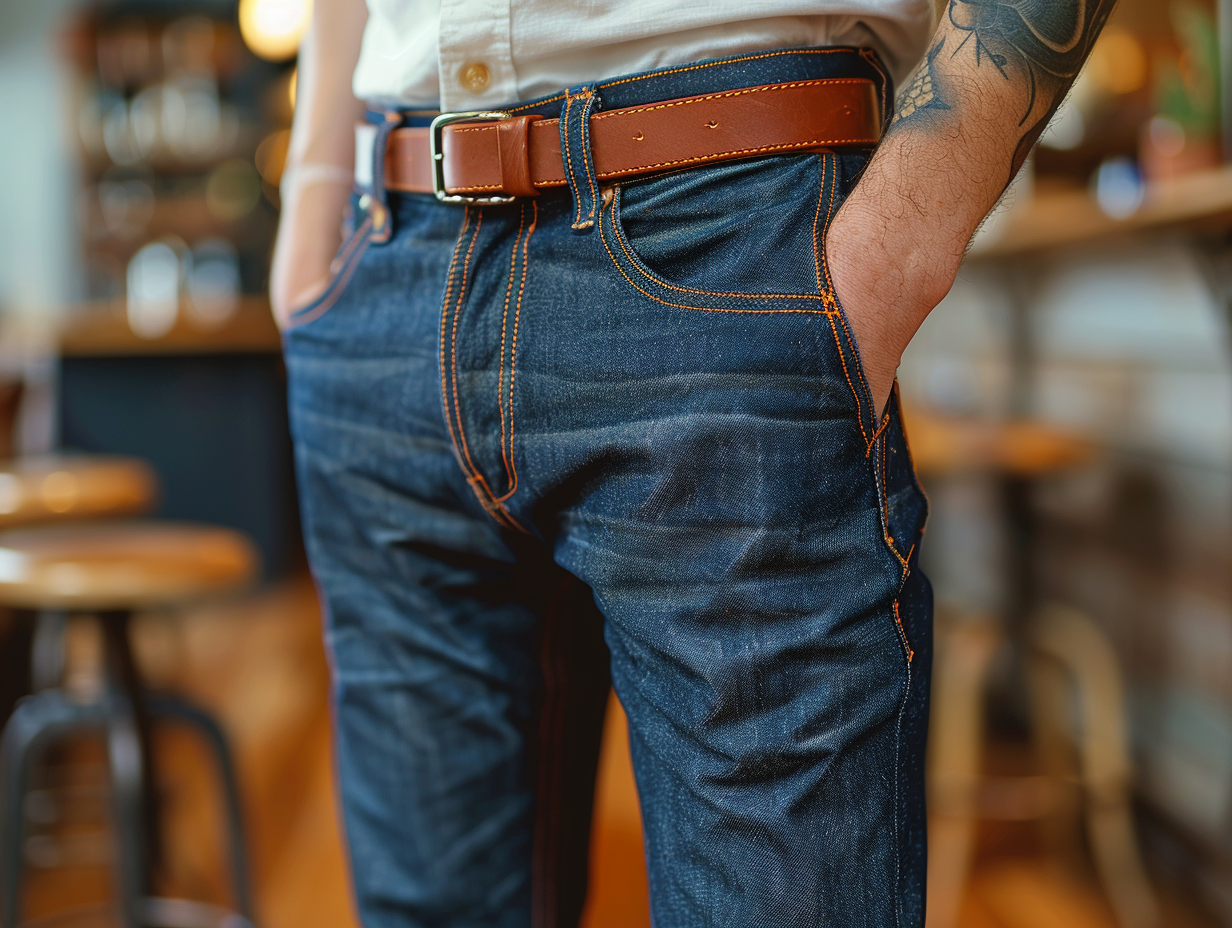Physical Address
304 North Cardinal St.
Dorchester Center, MA 02124
Physical Address
304 North Cardinal St.
Dorchester Center, MA 02124

Selvedge jeans, often synonymous with quality and traditional craftsmanship, are a type of denim highly sought after by fashion enthusiasts and those who value durable clothing. But what exactly makes these jeans so special? In this article, we will explore what selvedge jeans are, their history, how they are made, and why they are often considered superior to other types of jeans.
The history of selvedge denim dates back to the early 20th century when denim was predominantly woven on shuttle looms. This method was the standard until the mid-1900s, when faster, more efficient projectile looms began to replace shuttle looms in mass production. However, the shuttle loom method continued to be valued for its durability and the unique qualities it imparted to the fabric. Over time, as mass production took over, selvedge denim became a niche product, favored by denim enthusiasts and those who appreciate traditional craftsmanship.
Selvedge denim is produced on shuttle looms, which are slower and more meticulous than modern projectile looms. The shuttle loom weaves the fabric with a continuous weft thread that passes back and forth, creating a self-finished edge. This process results in a denser, more durable fabric with a tight weave and a clean edge. Because the fabric is narrower, typically around 30 inches wide compared to the 60-inch width of projectile loom denim, it takes more fabric to create a pair of jeans, contributing to the higher cost of selvedge jeans.
In contrast, standard denim is made on projectile looms, which are faster and more efficient, producing wider fabric but with a frayed edge that must be trimmed and stitched, resulting in a less durable finish.
Selvedge jeans are known for several distinctive features:
Aesthetic Appeal: The visible selvedge edge, often showcased by cuffing the jeans, is a mark of quality and craftsmanship.
Durability: The tightly woven edge of selvedge denim prevents fraying, making the jeans more durable and long-lasting.
Unique Fades: Over time, selvedge denim develops personalized fades and wear patterns, making each pair unique to the wearer.
Heavier Weight: Selvedge denim is typically heavier than standard denim, offering a sturdier feel and greater resistance to wear and tear.
There are several reasons why selvedge jeans are highly regarded:
Environmental Impact: Because selvedge jeans are designed to last longer, they can be a more sustainable choice compared to fast-fashion alternatives.
Quality and Craftsmanship: Selvedge jeans are often associated with superior craftsmanship, using traditional methods that prioritize quality over quantity.
Durability: The robust construction of selvedge denim ensures that the jeans can withstand years of wear, making them a long-term investment.
Aesthetic: Many people appreciate the classic look of selvedge denim, especially the visible selvedge edge when the jeans are cuffed.
When purchasing selvedge jeans, it’s important to buy from reputable brands and retailers to ensure authenticity and quality. Some well-known brands that specialize in selvedge denim include:
Iron Heart: Specializing in heavy-duty selvedge denim, Iron Heart is a favorite among denim enthusiasts.
Levi’s Vintage Clothing: Known for their high-quality reproductions of classic Levi’s styles.
Naked & Famous: A brand that offers a wide range of selvedge denim options with unique twists.
A.P.C.: A French brand that offers minimalist, well-crafted selvedge jeans.
Proper care is essential to maintaining the quality and longevity of selvedge jeans. Here are some tips:
Avoid Dryers: The heat from dryers can cause selvedge denim to shrink and lose its shape.
Avoid Frequent Washing: To preserve the denim and encourage unique fades, wash your jeans sparingly. Some enthusiasts recommend washing after six months of wear.
Cold Water Wash: When you do wash your jeans, use cold water to minimize shrinkage and preserve the indigo dye.
Air Dry: Always air dry your selvedge jeans to prevent shrinkage and maintain their shape.
Selvedge jeans are typically more expensive due to the traditional, labor-intensive methods used in their production and the higher quality of the denim.